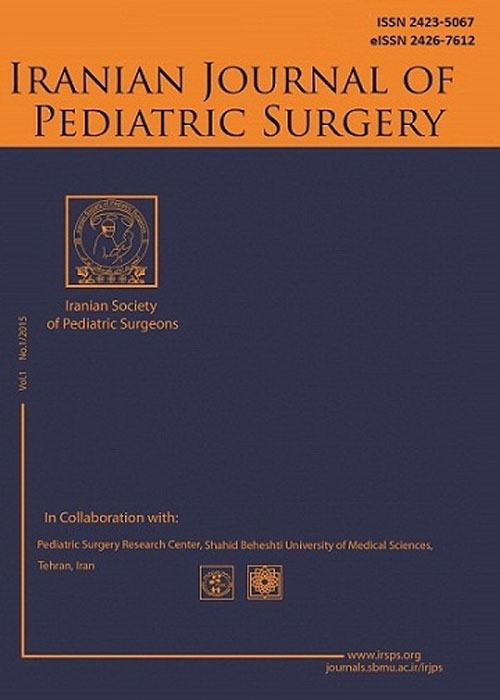Management and Outcomes of Meconium ileus, A six-year review
Meconium ileus is one of the most common causes of intestinal obstruction in the newborn, accounting for 9–33% of neonatal intestinal obstructions1. It is characterized by the lack of excretion of meconium caused by impaction of thick, desiccated protein rich pallet like meconium in the distal part of ileum, associated with clinical and specific radiological findings of intestinal obstruction2. It is the intestinal obstructive variant of cystic fibrosis3, Recent studies demonstrate that it can occur frequently without association of cystic fibrosis. The exact pathogenesis of MI in the absence of cystic fibrosis is yet to be known, a spectrum of genetic and pathological abnormalities may play a role4. Two forms of meconium ileus can be described, simple and complex meconium ileus4,5. In 1969, Noblett suggested the use of Gastrografin enema to treat uncomplicated meconium ileus7.Many surgical options have been used in the surgical treatment of meconium ileus including resection with Primary anastomosis, Mikulicz ileostomy, Bishop–Koop operation, and Santulli stoma. Resection with primary anastomosis was first described in 1962 9,15. An alternative to this approach was small bowel resection with creation of a stoma and eventual closure of the stoma with an end-to-end anastomosis. A distal chimney enterostomy (Bishop-Koop procedure) involves resection of disparately enlarged ileal loop filled with inspissated meconium and anastomosis between the end of the appropriately sized proximal segment to the side of the distal segment of bowel approximately 4 cm from the opening of the distal segment and the distal end is brought out as the ileostomy8, the reverse of the distal chimney enterostomy is the Santulli and Blanc proximal enterostomy. The Mikulicz double-barreled enterostomy where both proximal and distal loop was exteriorized. Bishop-Koop enterostomy has advantages over other procedure16,17,18as 1) it provides access for insertion of a catheter into distal bowel for post operative instillation of solubilizing agents for irrigation, 2) there is also decreased ostomy drainage after 12- 24 hrs of post operative period, so there will be less fluid and electrolyte loss, and 3) Permits an eventual enterostomy closure by bedside ligation of chimney stoma, avoiding another laparotomy for resection and anastomosis of bowel. Here we compare between various methods of treatment of meconium ileus and relative outcome and complications for each method.
This is Retrospective study was conducted from March 2016- February 2022 in the Department of Paediatric Surgery, SVPPGIP, S.C.B Medical College and Hospital Cuttack, Odisha. Patients with clinical and radiological suspicion of meconium ileus were included in the study. They were grouped according to the severity as simple or complicated meconium ileus. Then Many surgical options have been used in the surgical treatment of meconium ileus including resection with Primary anastomosis, Mikulicz ileostomy, Bishop–Koop operation, and Santulli stoma. Resection with primary anastomosis was first described in 1962 9,15. An alternative to this approach was small bowel resection with creation of a stoma and eventual closure of the stoma with an end-to-end anastomosis. A distal chimney enterostomy (Bishop-Koop procedure) involves resection of disparately enlarged ileal loop filled with inspissated meconium and anastomosis between the end of the appropriately sized proximal segment to the side of the distal segment of bowel approximately 4 cm from the opening of the distal segment and the distal end is brought out as the ileostomy8, the reverse of the distal chimney enterostomy is the Santulli and Blanc proximal enterostomy. The Mikulicz double-barreled enterostomy where both proximal and distal loop was exteriorized. Bishop-Koop enterostomy has advantages over other procedure16,17,18as 1) it provides access for insertion of a catheter into distal bowel for post operative instillation of solubilizing agents for irrigation, 2) there is also decreased ostomy drainage after 12- 24 hrs of post operative period, so there will be less fluid and electrolyte loss, and 3) Permits an eventual enterostomy closure by bedside ligation of chimney stoma, avoiding another laparotomy for resection and anastomosis of bowel. Here we compare between various methods of treatment of meconium ileus and relative outcome and complications for each method.
During the study period of six years, total 91 cases (7.5%) were diagnosed to be MI and included in this study. Among 91, 50 were male and 41 were female, 30 cases were Uncomplicated or simple, and 61 cases were complicated MI. Out of 30 simple MI, 18 were managed conservatively and rest 13 cases were managed with operative procedures. Among patient treated with nonoperative management only 7 responded and improved and 9 didn’t responded. 84 cases including all cases of complicated MI were treated by exploratory laparotomy. 49 cases were treated by Bishop-Koop ileostomy, 19 Mickulitz double barrel ileostomy and Santuli procedure were done in 11 patients. Primary anastomosis was done only in 5 cases. All cases were followed up for post-operative complications. 13 cases expired during follow up.
MI is a neonatal emergency which need early diagnosis, referral from peripheral hospital and early intervention by Pediatric surgeons. Proper evaluations, careful applications of conservative management, timely and proper surgical interventions may improve survival. Among all surgical procedure Bishop Koop ileostomy procedure is better option to treat MI both in uncomplicated and complicated groups.
- حق عضویت دریافتی صرف حمایت از نشریات عضو و نگهداری، تکمیل و توسعه مگیران میشود.
- پرداخت حق اشتراک و دانلود مقالات اجازه بازنشر آن در سایر رسانههای چاپی و دیجیتال را به کاربر نمیدهد.


